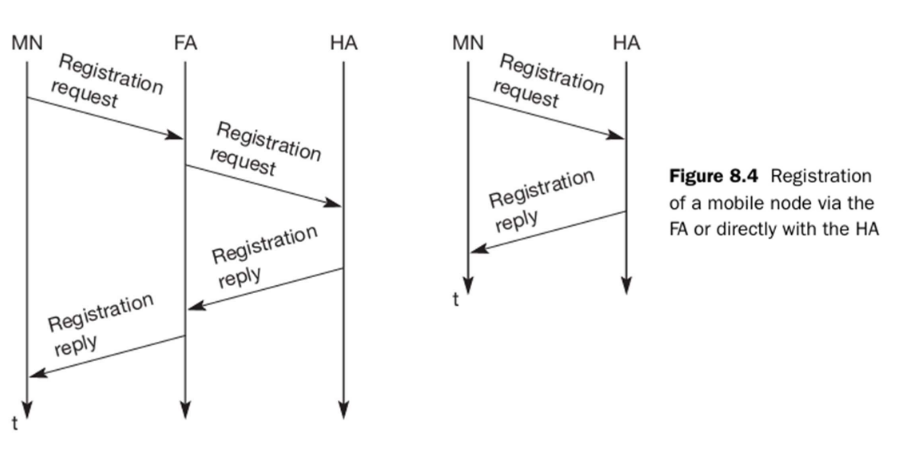Agent registration is the process by which a Mobile Node (MN) registers its presence in a foreign network with its Home Agent (HA) through a Foreign Agent (FA). This allows the HA to forward packets to the MN’s current location.
Agent Registration Process in Mobile Communication:
- FA advertises its presence to nearby Mobile Nodes (MNs).
- MN detects it’s in a foreign network and obtains a Care-of Address (COA).
- MN sends a Registration Request to the Home Agent (HA) via the Foreign Agent (FA) or directly.
- FA forwards the request to HA if it’s not a direct registration.
- HA verifies the request and updates its mobility binding table with MN’s COA.
- HA sends a Registration Reply back to the FA or MN indicating success/failure.
- FA (if used) forwards the reply to the MN.
- MN receives the reply and starts receiving tunnelled packets at the COA.

Registration Message Fields (Request & Reply)

• Type:
- 1 for Registration Request
- 3 for Registration Reply • Lifetime: Indicates the time duration of registration.
- In Request: Requested by the Mobile Node.
- In Reply: Granted by the Home Agent. • Home Address: Permanent IP address of the Mobile Node (MN). Must match in both Request and Reply. • Home Agent: IP address of the Home Agent (HA) responsible for the MN. • Identification: Unique value used to prevent replay attacks. Must match between Request and Reply. • Extensions: Optional fields for authentication or additional information. • Flags (in Request only): Control bits like S, B, D, M, G, r, T, x. Enable features such as simultaneous bindings, reverse tunnelling, etc. • Care-of Address (COA) (Request only): Temporary IP address where the MN is currently located (in the foreign network). • Code (Reply only): Indicates registration status (e.g., success, denial, or error type).